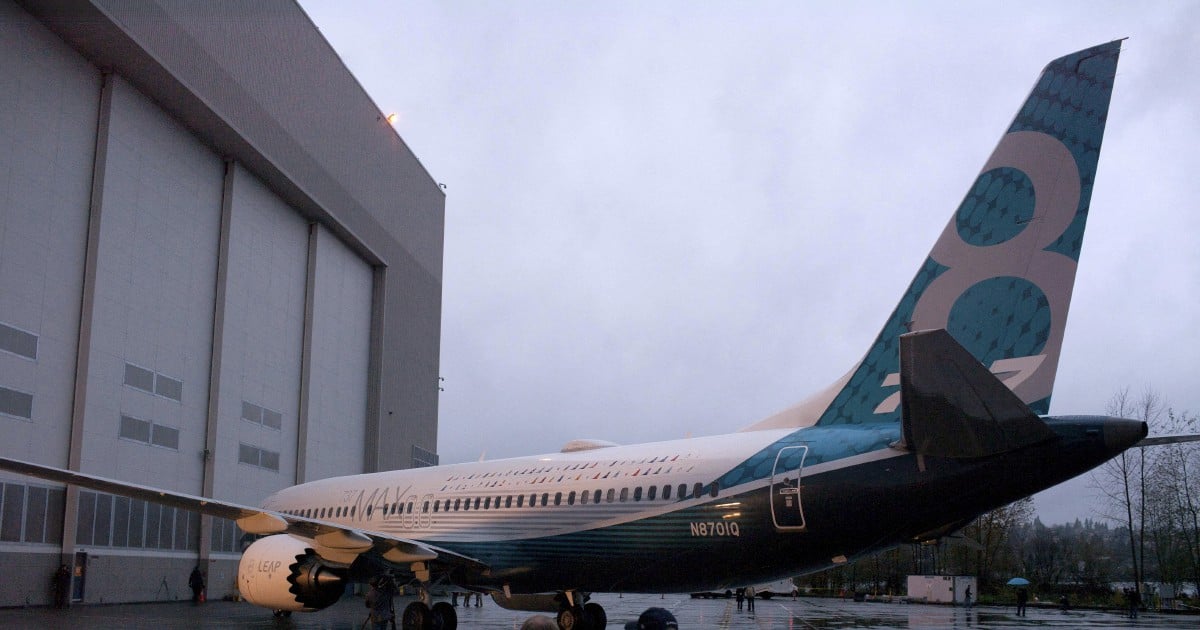







Boeing is navigating a complex landscape of safety concerns and regulatory scrutiny as it resumes deliveries of its troubled 737 Max jet to China. Recently, Boeing Global president Brendan Nelson visited Beijing to meet with Chinese aviation regulators, focusing on the safety of the 737 Max. This comes after China’s Civil Aviation Administration (CAAC) lifted its ban on the aircraft, which had been grounded since March 2019. However, the CAAC has stressed the importance of compliance management and ensuring that aircraft are in good technical condition. In May, deliveries were paused due to concerns over batteries used in cockpit voice recorders, prompting Boeing to enhance its quality checks during manufacturing and revise its quality management system guidelines.
Adding to Boeing's challenges, the US National Transportation Safety Board (NTSB) issued urgent safety recommendations on September 26, 2024, regarding rudder systems on certain Boeing 737 aircraft. This recommendation followed a February incident involving a United Airlines Boeing 737 MAX 8 at Newark airport, where the rudder pedals were stuck in the neutral position. Fortunately, no injuries occurred among the 155 passengers and six crew members. The NTSB identified a faulty rollout guidance actuator manufactured by Collins Aerospace as the cause, affecting over 353 actuators delivered to Boeing since February 2017. The Federal Aviation Authority (FAA) plans to convene a corrective action review board based on these findings.
Boeing's reputation has been further tarnished by multiple safety incidents, including a door plug failure in January 2024 and the crashes of two 737 MAX aircraft in 2018 and 2019, which resulted in 346 fatalities. As the company works to rebuild trust in China—a key market for its aircraft—it faces increasing competition from domestically produced narrowbody C919 aircraft, which have been conducting commercial flights for over a year. The C919, developed by Comac, aims to compete directly with the Boeing 737 and Airbus A320. It is designed with sustainability in mind and successfully completed its first flight on sustainable aviation fuel in September 2024. Comac is currently in the third stage of a four-step process to gain certification from the European Union Aviation Safety Agency (EASA) and aims for FAA approval amid geopolitical concerns.
In a significant boost for Comac, GE Aerospace, a key engine provider for the C919, has pledged stable supplies and improved local support for Comac's production plans. This assurance comes amid global supply chain issues affecting aircraft manufacturing. GE China president Weiming Xiang announced plans to enhance local manufacturing and cooperate with Comac, which aims to ramp up C919 production to meet increasing orders from Chinese carriers and compete with Boeing and Airbus. GE projects that China will need up to 9,000 new passenger jets by 2042. Comac is on track for record C919 output, having delivered to three major airlines in August. Since its introduction in May 2023, the C919 has logged over 13,000 operational hours and carried 700,000 passengers. Comac plans to produce 150 C919s annually over the next five years, with an order backlog of over 300 C919s, as major domestic carriers commit to procure at least 100 by 2031.
In a recent development at the Zhuhai air show on November 13, 2024, Comac signed a framework agreement for its first C929 widebody jet with Air China. The C929 is expected to accommodate 280-290 passengers with a range of 12,000 km, with deliveries anticipated by 2029. US jet-engine maker GE Aerospace and European landing-gear producer Liebherr are set to assist Comac in developing the C929, which aims to compete with the Airbus A350 and Boeing 787. Liebherr plans to meet with Comac in Shanghai to discuss specifications, while GE Aerospace is exploring further cooperation. The C929's development underscores Comac's reliance on foreign suppliers for key parts, as the CJ-1000 engine is also under development to reduce imports. However, geopolitical concerns continue to affect supply chains, and Comac's assembly in Shanghai is subject to international certification.
As of November 2024, Comac has delivered 12 C919 planes since late 2022 and has a backlog of 360 firm orders from domestic airlines, including 60 for Hainan Airlines. The C919 competes with the Airbus A320 and Boeing 737, with Air China opting for an extended-range variant capable of flying 5,555 km, while China Eastern and China Southern have chosen the standard model with a range of 4,075 km. Comac is sourcing key components from foreign suppliers like CFM International and Collins Aviation due to client specifications, highlighting the urgency for foreign-part acquisitions amid global supply chain disruptions. Chinese officials aim for industrial self-sufficiency in aircraft manufacturing but face challenges in developing domestic technology. Experts suggest that achieving self-sufficiency will take years and significant R&D investment. In 2023, Boeing delivered 291 planes, a decline from 371 in 2022, while Airbus saw an increase in deliveries from 488 to 497. The Asia-Pacific aviation market is projected to grow significantly, from $52 billion in 2023 to $129 billion by 2043, which could lead to increased competition that may lower prices and enhance market efficiency. Comac's Shanghai factory has set an ambitious goal of producing 150 C919 jets per year by 2028, indicating a strong push to establish itself as a formidable player in the global aviation market.
As Comac ramps up its C919 production, local governments are increasingly competing to attract investment and production facilities. By early December 2024, Comac had delivered only 13 C919 jets despite having contracts for over 360 planes. Shanghai has emerged as the main production hub, signing deals worth 26 billion yuan (approximately US$3.57 billion) in October 2024. Other provinces, including Shaanxi, Sichuan, and Jiangxi, are also vying for a share of the production pie, which could strengthen Comac's supply chain as local competition intensifies. Comac plans to establish regional centers to better coordinate with local suppliers, and Western firms like Liebherr are involved in supplying components, further enhancing the production ecosystem around the C919. [630c0055][eca48251][1515ac5e][151dceb2][7d2441fe][270a5046][4e99cfc1][3e8a968f]